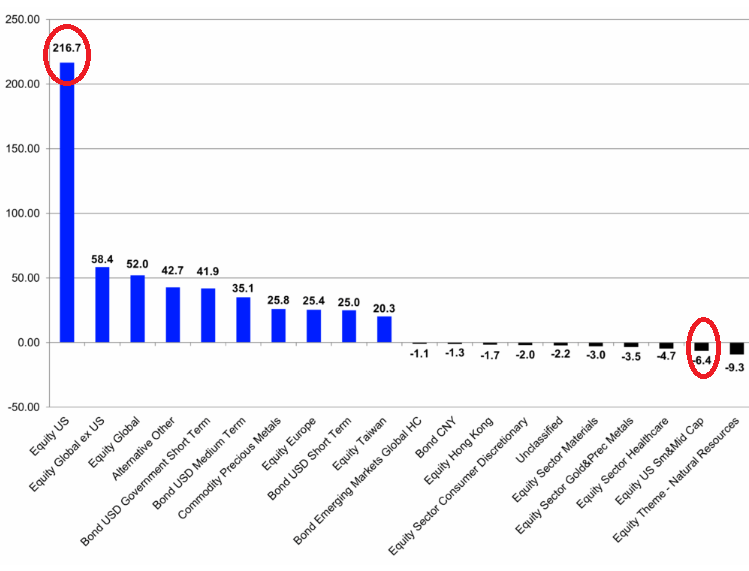“Trees don’t grow to the sky” - Ellerston challenges overweights to mega-cap tech stocks

Tech stocks have run so hard, they’ve blurred the line between a single sector and the market.
The Magnificent Seven account for nearly 35% of the S&P 500. If Nvidia (NASDAQ: NVDA) were to be a country, it's poised to become the world's third-largest given its US$4.31 trillion market cap (behind Germany, China and the US).
And with the majority of passive flows being funneled into US equities, the cycle of concentration keeps reinforcing itself.
But Nick Markiewicz, Portfolio Manager at Ellerston Capital, says even the most powerful companies will eventually run into gravity.
“Trees don’t grow to the sky. The bigger a company gets, the harder it becomes to keep outperforming... unless the entire economy becomes a GPU-AI system," he says.
Instead of chasing overstretched mega-caps, he believes the better opportunity lies in companies benefiting from the same structural themes, especially AI infrastructure, that haven’t yet been fully recognised by the market.
And with macro conditions shifting, he sees early signs that interest will pick up in other corners of the global equity universe.
Is concentration nearing a peak?
Markiewicz points to several forces behind the mega-cap tech rally.
In the 2010s, the so-called Magnificent Seven became market darlings, each delivering 10-bagger returns (or more) and ascending into the S&P 500’s top 10.
At the same time, market dynamics shifted. Passive investing surged, while active managers lost ground to cheaper index products. As tech took centre stage, other sectors lagged.
“We’ve had what I would describe as an industrial recession since 2017, plus high interest rates more recently. That’s a tough combo for small and mid-caps," he says.
With U.S. equity ETFs pulling in over US$200 billion in net flows this year, Markiewicz isn’t calling time on the tech rally - but he is increasingly wary of how concentrated portfolios have become. He believes a rotation into overlooked parts of the market is likely, especially as the tallest trees inevitably reach maturity and investors look at smaller companies for growth.

AI infrastructure: A trillion-dollar theme, hiding in plain sight
While Nvidia, Microsoft (NASDAQ: MSFT), and Meta (NASDAQ: META) dominate the headlines, Markiewicz believes investors are missing a broader set of opportunities tied to the physical infrastructure behind artificial intelligence.
“Compute capacity requires electricity, data centres, and a lot of specialised hardware and infrastructure. And many of the pinch points in that supply chain - the things that are hard to replicate - are controlled by a small group of companies that most investors haven’t looked at yet," he says.
While investors can get AI exposure by buying index funds, it’s often indirect.
“You’ve got 10–15 ways you can play this trend. And for a lot of the companies investing in AI, it’s just a small subset of what they do. So you don’t actually get direct exposure. And the companies where you do get direct exposure - like Nvidia - they’re wonderful businesses, but they’re already priced for some pretty nice outcomes," says Markiewicz.
Some of the AI investments within the Ellerston Global Mid Small Cap Fund include Nebius (NASDAQ: NBIS), an AI-centric cloud platform, and Core Scientific (NASDAQ: CORZ), a provider of high-density data centers.
A macro regime that potentially favours the forgotten?
Investors have long heard talk of a value rotation. But this year, the evidence is starting to mount. Markets including Europe, China’s beaten-down shares, and Canada’s TSX have emerged as standout performers. These aren't tech-heavy indices.
“We’ve started to see the equal-weighted S&P 500 outperform the traditional index. That means the S&P 490 — the rest of the market — is finally starting to do better than the top 10 stocks," Markiewicz says.
He points to three macro factors turning in favour of overlooked parts of the market: hedge fund positioning, inflation, and global liquidity.
“Hedge funds came into the year incredibly bearish. They were de-grossing and increasing their shorts. But those positions are now starting to normalise — and that matters, because hedge funds are often the marginal buyer in this part of the market," he says.
At the same time, liquidity is rising and inflation is falling — two ingredients that typically benefit cyclical and interest-rate-sensitive businesses. And when market leadership broadens, he expects capital will follow earnings.
How Ellerston finds opportunities others miss
Ellerston screens a universe of around 3,000 global stocks down to a portfolio of 20–40. Markiewicz says the team is looking for three core types of businesses:
- Mispriced quality - “Sometimes the market overreacts to short-term news. The share price sells off, but the fundamentals haven’t changed much.”
- Underappreciated compounders - “These are businesses in earnings upgrade cycles that aren’t priced accordingly. We look for companies with strong revisions, high returns, and good growth histories.”
- Qualitative triggers - “Things like management changes, industry shifts, or capital policy changes — the kind of insights you don’t get from a screen.”
A key part of Ellerston’s discipline is ensuring each holding has a clear and timely reason to be in the portfolio.
“It’s all about risk-reward and the time value of money,” Markiewicz says. “You might find something undervalued by 50%, but if there’s no catalyst in the next 12 months, we’d rather put capital elsewhere.”
While AI stocks are a key investment for the Ellerston Global Mid Small Cap Fund, Markiewicz underscores that he doesn't chase flashy trends.
“We’re not thematic investors. We look for earnings growth. If you look at our book, there are a lot of different stocks that don’t necessarily fall into neat thematic buckets — and we like that, because it reduces volatility," he says.
3 non-AI portfolio picks from Ellerston
Markiewicz shared three current holdings that reflect Ellerston’s diversified strategy:
1. AirCap (NYSE: AER)
“It’s the world’s largest aircraft leasing company — a bank with wings. It trades at a slight premium to book value, but the secondary market is pricing aircraft at 30–50% above that. Plus, they’re growing book value and buying back stock. A very sensible compounder," he says.
2. Warner Music Group (NASDAQ: WMG)
“They own a third of the global music catalogue. With Spotify and others raising prices, Warner’s revenue share is going up — and that pricing power is shifting back to the labels. Every dollar of increase mostly drops to the bottom line because the content is already created.”
3. Corpay (NYSE: CPAY)
“This company is growing cross-border payments at 20% a year, has a 55% EBITDA margin, and trades at just 14x earnings. It was derated over concerns about EV trucks and stablecoins, but we think those fears are overdone. Their track record of EPS growth over two decades puts them in a very elite club.”
Managing the risks
Investing in small and mid-caps isn’t for the faint-hearted, but the Ellerston team relies on experience to navigate volatility and preserve capital.
“To generate returns, you need to protect capital first,” says Markiewicz. “We structure the portfolio to be diversified - across markets, currencies, sectors, and styles—and we focus on conviction.”
He points to the recent market reaction to DeepSeek in January as a case in point.
“The market thought it would disrupt the entire AI capex cycle. But if you’d done the work, you knew it wasn’t that impactful. Those moments are where you can add real value," he says.

4 topics
2 stocks mentioned
1 fund mentioned

